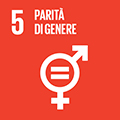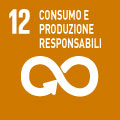- Docente: Stefano Marino
- Crediti formativi: 6
- SSD: M-FIL/04
- Lingua di insegnamento: Inglese
- Modalità didattica: Convenzionale - Lezioni in presenza
- Campus: Rimini
- Corso: Laurea Magistrale in Fashion Studies (cod. 6059)
-
dal 27/03/2025 al 16/05/2025
Conoscenze e abilità da conseguire
Al termine del Corso lo/la studente: conosce gli aspetti essenziali dei dibattiti sulla "cultura pop"; sa contestualizzare la cultura di massa e le poetiche del "pop"; sa riflettere criticamente sulla comunicazione mediata da forme simboliche di matrice estetica; sa comprendere le pratiche estetico-comunicative legate al gusto e alla bellezza, e il loro ruolo nella costituzione dell’immagine di individui e gruppi, delle identità e degli stili di vita.
Contenuti
Pop culture, Rock music, Philosophy, and Society.
The lecture course investigates the multidimensional imaginary of popular culture as a "prism" for a critical understanding of the contemporary age in general.
Through the analysis of selected topics according to criteria derived from different philosophical and sociological perspectives, the program aims to face the complex contaminations in the contemporary world between "high" (or "serious") culture, on the one side, and "low" (or "popular") culture, on the other side, and then aims to focuse on the relation between pop culture, rock music, philosophy and society.
In this context, a specific attention will be paid: (1) to two among the most important pop-rock bands of the last decades, Pearl Jam and Radiohead; (2) to the latter's relation with fundamental aspects of contemporary culture and society, like some ethical-political issues (including feminism) and the role played by technology in our lives.
The bibliography may be subject to changes until the beginning of the lecture course.Testi/Bibliografia
Readings/Bibliography
1) R. Shusterman. Pragmatist Aesthetics: Living Beauty, Rethinking Art, Rowman & Littlefield Publishers, Inc., Lanham-Boulder-New York-Oxford 2000, only the following parts:
Chapter n. 7: “Form and Funk: The Aesthetic Challenge of Popular Art”.
2) E. Wilson. Adorned in Dreams: Fashion and Modernity, Tauris & Co., London-New York 2003, only the following parts:
Chapters n. 1, 8 and 9: "Introduction", "Fashion and Popular Culture", "Oppositional Dress".
3) S. Marino and A. Schembari (eds.), Pearl Jam and Philosophy, Bloomsbury, London-New York 2021, only the following parts:
Introduction, Chapters n. 1 (S. Marino), n. 4 (L.M. Bernhardt), n. 7 (P. Stellino), n. 8 (S. Kramer), n. 11 (A. Alfieri).
4) S. Marino. Popular Music, Feminism and the “Power of the Body” in the Performance: Some Remarks on Adorno, Shusterman and Pearl Jam, in "Popular Inquiry”, n. 2, 2022, pp. 48-69
(available in open access at: https://www.popularinquiry.com/issues-articles).
5) S. Marino and E. Guzzi, The Philosophy of Radiohead: Music, Technology, Soul, Mimesis International, Milano-Udine 2024.
The bibliography may be subject to changes until the beginning of the lecture course.
***
Other suggested (not mandatory) readings:
b. hooks, Feminism is for Everybody, Pluto Press, 2000.
C. Ngozi Adichie, We Should All Be Feminists, Fourth Estate, New York 2014.
M. Calloni, V. Antoniol and S. Marino, Critical Theory, Feminism and Popular Culture: Interview with Marina Calloni, in "Popular Inquiry”, n. 2, 2022
(available in open access at: https://www.popularinquiry.com/issues-articles)
K. Stögner, S. Marino and I. Zampaglione, Critical Theory and Feminism Today: An Interview with Karin Stögner, in "Scenari", n. 18, 2023
(available in open access at: https://mimesisjournals.com/ojs/index.php/scenari/article/view/3073)
G. Albonetti, Rock e maschilismo, in "Filosofemme", 24 October 2022
(available in open access at: https://www.filosofemme.it/2022/10/24/rock-e-maschilismo/)
G. Prato, Grunge Is Dead: The Oral History of Seattle Rock Music, ECW Press 2009.
S. Marino. Thirty Years of Pearl Jam (and Grunge Subculture): 1991-2021, in "Journal of Asia-Pacific Pop Culture”, n. 2, 2021
(available at: https://scholarlypublishingcollective.org/psup/jappc/article/6/2/365/288170/Thirty-Years-of-Pearl-Jam-and-Grunge-Subculture)
***
Students with SLD or temporary or permanent disabilities.
It is suggested that they get in touch as soon as possible with the relevant University office (https://site.unibo.it/studenti-con-disabilita-e-dsa/en) and with the lecturer in order to seek together the most effective strategies for following the lessons and/or preparing for the examination.
Metodi didattici
Traditional lectures and class discussions with students.
Modalità di verifica e valutazione dell'apprendimento
The assessment method is written.
The students will write a paper on at least 3 topics chosen from at least 3 texts in the Program of this Lecture Course, and send the paper to the teacher as email attachment (in Word format) at least 15 days before the day of the exam date published on AlmaEsami.
The teacher may ask the students to integrate and complete the exam (after the submission of the paper) with an oral conversation on the program.
All papers may be also assessed by the teacher through the use of anti-plagiarism softwares / plagiarism detectors.
The paper must be written using Times New Roman 12, and must be long 7.000 characters min. and 25.000 characters max. (blank spaces included).
The paper must include: Name of the student and Identification number (“Matricola”) / Title of the paper / Main Text (structured in sections or not) / Bibliography.
The students must read and study all the texts in the Program (not just one text; all texts must be read, as usually happens in every Lecture Course at the University).
The students can select then the topics from the various texts that are more interesting for them, and can choose to focus their paper on those topics.
It is important that the teacher can understand from the paper the student's level of knowlegde of the Program (as also happens in oral exams, for example, where the teacher may typically ask to the student various questions on the different texts in the Program, to try to understand the student's level of knowledge and understanding of the whole Program, and not just of a single text).
If a student wants to choose a case study and use it as a starting point to write his/her paper, this is, in principle, also acceptable (so that students, if they want, may also use their phantasy or use examples taken from their experiences with fashion, music, art, etc.), but it is important that students don't write their paper only on the event or phenomenon that they have freely chosen, but rather use it as an example to apply the concepts presented in the texts in the Program.
***
The examination will ensure the achievement of the following objectives:
- knowledge of the main conceptual contents of the texts examined;
- general orientation concerning the characteristics of contemporary aesthetic culture;
- comprehension of the affinities and differences between heterogeneous philosophical approaches to popular culture;
- comprehension of the meaning of the concepts learned in relation to the concrete phenomena taken into account.
***
Students with SLD or temporary or permanent disabilities.
It is necessary to contact the relevant University office (https://site.unibo.it/studenti-con-disabilita-e-dsa/en) with ample time in advance: the office will propose some adjustments, which must in any case be submitted 15 days in advance to the lecturer, who will assess the appropriateness of these in relation to the teaching objectives.
Strumenti a supporto della didattica
The lessons will be supported by the multimedia material available in the classroom.
Orario di ricevimento
Consulta il sito web di Stefano Marino
SDGs




L'insegnamento contribuisce al perseguimento degli Obiettivi di Sviluppo Sostenibile dell'Agenda 2030 dell'ONU.
